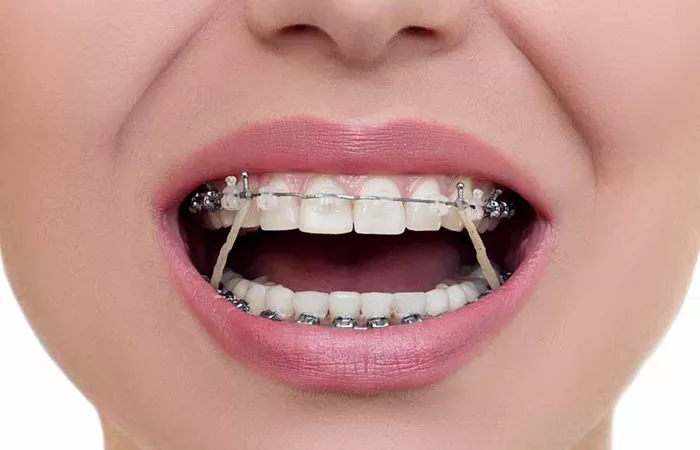Orthodontic treatment with braces is a common way to correct misaligned teeth and improve oral health. One important component often used in braces treatment is elastics, also called rubber bands. Elastics are small but powerful tools that help achieve precise tooth movement. Understanding their purpose is crucial for patients undergoing orthodontic care.
What Are Elastics in Orthodontics?
Elastics are tiny rubber bands attached to brackets on braces. They connect the upper and lower teeth in specific patterns determined by the orthodontist. These bands create gentle pressure on the teeth and jaws to guide them into proper alignment over time.
Types of Elastics
There are several types of elastics used in orthodontics:
Class I elastics: Used to close spaces between teeth on the same jaw.
Class II elastics: Connect upper front teeth to lower back teeth to correct overbites.
Class III elastics: Connect lower front teeth to upper back teeth to correct underbites.
Vertical elastics: Help adjust the bite vertically by connecting upper and lower teeth.
The Purpose of Elastics on Braces
Elastics serve several important purposes in orthodontic treatment. Their primary function is to apply controlled forces to move teeth and jaws into better alignment.
Correcting Jaw Alignment
Many patients have malocclusions, such as overbites, underbites, or crossbites. Elastics help reposition the jaws relative to each other. For example, Class II elastics pull the lower jaw forward while gently pushing the upper jaw backward, improving the bite relationship.
Enhancing Tooth Movement
While braces alone move teeth along their arches, elastics help adjust the relationship between the upper and lower teeth. This combined force achieves complex tooth movements impossible with braces alone.
Maintaining Treatment Efficiency
Elastics help speed up treatment by applying constant gentle force. Without them, certain bite issues would require longer treatment time or even surgical intervention.
How Elastics Work Mechanically
Elastics apply a pulling force between the teeth where they are hooked. This force stimulates bone remodeling around the tooth roots, allowing teeth to move gradually through the bone.
Bone Remodeling and Tooth Movement
When elastics stretch, they exert tension on the periodontal ligament and alveolar bone. Cells called osteoclasts resorb bone in the direction of movement, while osteoblasts build new bone behind the moving tooth, stabilizing it in its new position.
The Role of Elastics Alongside Other Dental Procedures
Elastics often work as part of a comprehensive orthodontic treatment plan. Some patients require additional dental procedures like tooth extractions or root canal treatment to facilitate ideal tooth movement and oral health.
Tooth Extractions to Make Space
In cases of severe crowding, orthodontists may recommend extracting one or more teeth. Removing teeth creates space for remaining teeth to be aligned properly. Elastics then help close gaps and adjust the bite after extraction.
Root Canal Treatment and Orthodontics
Teeth that have had root canal treatment can still be moved safely with braces and elastics. However, these teeth need careful monitoring as they might be more fragile. Orthodontic forces from elastics are applied with caution to prevent damage.
Patient Compliance and Elastics
The effectiveness of elastics depends heavily on patient compliance. Patients must wear elastics exactly as instructed — usually 20 to 24 hours daily — and replace them regularly since elastics lose elasticity over time.
Common Challenges Patients Face
- Discomfort initially when elastics are worn.
- Remembering to put them back after meals or brushing.
- Social discomfort or embarrassment.
Tips for Successful Elastic Wear
- Keep a supply of elastics handy to replace lost ones.
- Follow the orthodontist’s instructions strictly.
- Communicate with the orthodontist if pain or problems arise.
Common Questions About Elastics on Braces
Do Elastics Hurt?
Elastics may cause mild soreness or pressure initially. This is normal and indicates that the teeth are moving. The discomfort usually decreases within a few days.
How Long Do You Have to Wear Elastics?
Wear time varies by case but is often several months. Orthodontists regularly review progress and adjust elastic use accordingly.
Can You Eat with Elastics?
It is best to remove elastics while eating and replace them immediately afterward. Eating with elastics on can cause breakage or loss.
Potential Complications if Elastics Are Not Used Correctly
Incorrect or inconsistent use of elastics can lead to delayed treatment, poor bite correction, or relapse of orthodontic issues. In rare cases, excessive force or misuse can cause root resorption or damage to tooth structure, especially in teeth that have undergone root canal treatment.
Importance of Regular Orthodontic Visits
Orthodontic visits allow for monitoring of tooth movement, adjustment of elastics, and early detection of complications such as irritation or root problems.
Conclusion
Elastics play a crucial role in modern orthodontics by enabling complex tooth and jaw movements. They work in harmony with braces and other dental procedures like tooth extractions and root canal therapy to achieve a healthy, functional, and beautiful smile. Patient adherence to elastic wear instructions is essential for success.

